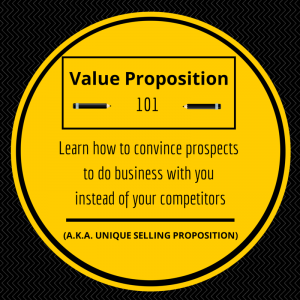Is Your Website Killing Your Brand?


Is your website killing your brand? That's not an easy question to ask. It may be even harder to answer, particularly if you're not an expert on website creation and content management. If you're serious about building a superior online image, it’s important to ask whether your website is doing all it can to support your brand. With so much competition for your customers' online time, your website can't simply be "good enough."
It needs to cut through the digital noise and deliver immediate, compelling value to your prospective customers. If it can do so on a consistent basis, you'll reap the benefits as a growing number of those online prospects become paying customers.
These six website components, presented here as easy-to-follow tips, can make or break your online image. Executed properly, they'll stop your website from killing your brand and they have the potential to turn it into a brand-building machine.
1. Follow the Seven-Second Rule
The seven-second rule governs the first impressions of new website visitors. It dictates that first-time visitors form lasting judgments about a website within seven seconds. If they don't like or understand what they see, they move on to the next one.
The seven-second rule is sometimes presented as the "five-second rule," "two-second rule" or even "50-millisecond rule." Regardless of the precise duration, the point is clear: New visitors to your website are likely to form snap judgments about it. If your website doesn't present important information clearly, succinctly and attractively, it's likely to lose visitors.
Using the seven-second rule to your advantage is a straightforward proposition. Your website's homepage needs to convey three simple concepts: who you are, what you sell and what makes you different from the competition.
Conveying the first concept requires a clearly displayed business name with a succinct phrase typically expressed as an H1 tag or customized HTML logo that describes what you do.
If you sell physical goods, it's best to convey the second concept using images of your top-selling items or an easy-to-process, large font text rundown of your basic product categories. If you're a service provider, intuitive, well-placed stock imagery and a basic list of services will do the trick.
Conveying the third concept might demand immediately recognizable superlatives, such as award badges, or attributes that even a first-time visitor would recognize as unique. Since you know your business better than anyone else, you're in the best position to determine what fits here. That said, price-match guarantees, free shipping, free consultations and other clear indications of value are all good starts.
2. Invest in Intuitive Navigation and Responsive Design
There's no "seven-second rule" analogy in the realm of navigation, but that doesn't make it any less important to invest in a website that allows users to navigate smoothly among web pages. Even if visitors remain on your site after seven seconds, they will soon tire of a navigation system that makes it difficult to learn more about what you do.
To avoid this trap, use a mobile responsive website layout that displays large navigation buttons on a nav bar that remains fixed at the top of each scrollable page. Think of these buttons as the limbs of your online tree, stretching out from your homepage's trunk to direct users to popular or important areas of your site.
Your optimal nav button mix depends on your company's focus and customer base, but common ones include "Contact," "About," "Help" as well as whatever product and service categories you want to highlight.
3. Present a Compelling Value Proposition
Crafting a compelling value proposition requires a bit more work than passing the seven-second test. With that said, your value proposition shouldn't contain an overwhelming amount of information. While you can certainly post a white paper or case study that outlines it in exhaustive fashion on your website, you should also work on condensing it into something that has an immediate impact.
To create your value proposition, group your highest-value prospects and customers into buyer personas. Using sales data, market research and your own background knowledge, outline each group's strengths and vulnerabilities. Next, present a solution that's tailored to each persona's unique needs. Finally, distill this solution into a punchy statement that compellingly sets your business apart from the competition.
4. Facilitate Visitors' Decision-Making Process
Every one of your website's visitors is on his or her own personal "buyer's journey." Buyer's journeys have three stages: awareness, consideration and decision. Whereas first-time visitors are generally at the awareness stage, repeat visitors may be well on their way to the decision phase.
Your website should speak to buyers at each stage of the journey with a compelling value proposition for awareness-stagers, attractive and informative product and service descriptions for consideration-stagers, and a powerful closing message with an unmistakable call-to-action for decision-stagers.
5. Fight Friction and Anxiety
Most buyers are justifiably leery about making a final purchasing decision, particularly when it's their first time purchasing. They may also have trouble with the actual process and mechanics of the sale. This is known as "friction" or "buyer friction."
Buyer friction is often compounded by the buyer's literal anxiety about the cost, quality and long-term value of a particular product or service. To ensure that your prospects aren't overwhelmed by friction and anxiety toward the end of their buyer's journey, you need to address both simultaneously.
In addition to the steps outlined in Point 4, the most effective way to do this is to offer clear reassurance that they're getting their money's worth, and that their investment will be protected in the event that something goes wrong. This might involve a clearly stated refund and return policy in addition to a detailed FAQ about shipping, the buying process and other logistical concerns.
6. Make the Decision Easier with Incentive Offers
While you should never "give away the store" with excessive discounts that devalue your products and brand, an argument can be made for consistently presenting your prospects with high-value incentive offers.
The best approach varies from seller to seller, but bulk discounts and contests or deals for customers who follow your social media accounts have consistently proven to be effective. Such offers could seal the deal with decision-stage buyers who need just one small push towards becoming paying customers.
To find out if your website is helping or hurting your brand, contact us for a free Inbound Marketing Assessment. Our customers average a 93% increase in website traffic within 12 months of implementing our proven marketing strategies and tactics and we’d like to share some of those tips with you during an Inbound Marketing Assessment. Start now to get more traffic, convert more leads and close more sales.







